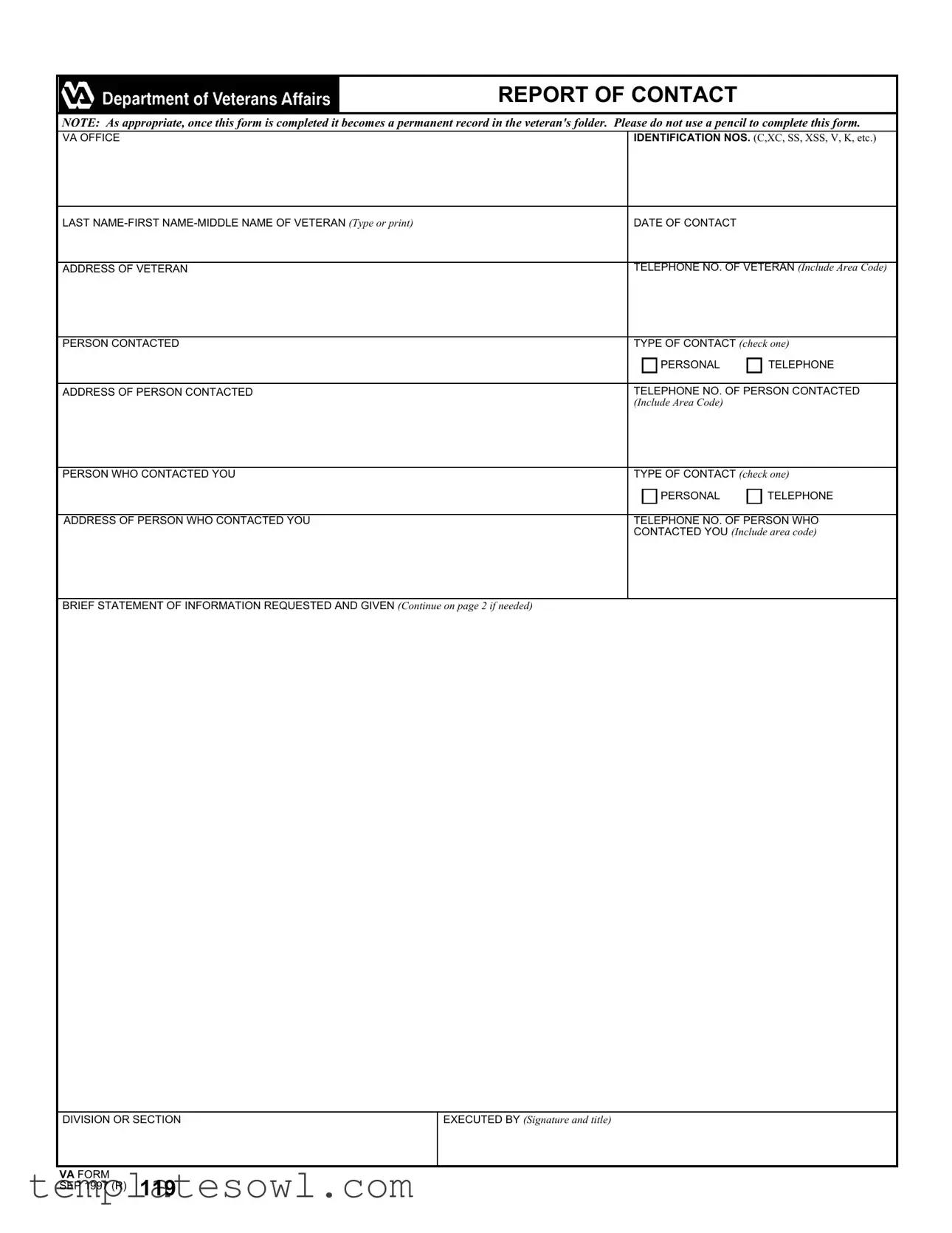What is the VA Form 119?
The VA Form 119, also known as the Report of Contact, serves as a record-keeping tool used by the Department of Veterans Affairs. It documents any interactions between veterans, their representatives, and VA personnel. After completion, this form becomes a permanent part of a veteran's record, highlighting important communications and requests for information.
How do I fill out the VA Form 119?
Completing the VA Form 119 is straightforward. First, ensure you use pen rather than pencil, as the form must be clear and durable. Provide your personal information such as full name, contact details, and the specifics of your interaction. Be thorough, especially in the "Brief Statement of Information Requested and Given" section, as this will capture the essence of the communication. If more space is needed, you can continue on a second page.
Who should use the VA Form 119?
The form is primarily intended for veterans and their representatives who interact with VA personnel. If you are a veteran seeking assistance or information, or if you are a family member or advocate representing the veteran, this form is appropriate for documenting your communication with the VA.
When should I use the VA Form 119?
Use the VA Form 119 to document any contact with the VA regarding inquiries, assistance requests, or updates to veteran records. It is especially useful during times of significant communication regarding benefits, claims, or medical services. This form can help keep track of what information was shared or requested during those interactions.
Where do I submit the completed VA Form 119?
After filling out the VA Form 119, you generally do not submit it to a central location. Instead, ensure that the completed form is kept in the veteran's file or folder. The form should be appropriately filed within the relevant section at the VA office to maintain accurate records of all communications.
What happens to the VA Form 119 after submission?
Once submitted and filed, the VA Form 119 remains a part of the veteran’s permanent record. It is important to maintain accuracy in the information provided, as it may be reviewed in future communications or when processing claims. The form facilitates ongoing support and ensures that there is a clear record of past interactions.
Can I request a copy of the VA Form 119 that was submitted?
Yes, veterans or their representatives can request copies of any forms submitted, including the VA Form 119. This is often done by contacting the VA office where the form was filed. Keeping a personal copy of any form submitted is also a recommended practice to easily reference the information shared during your contact with the VA.


